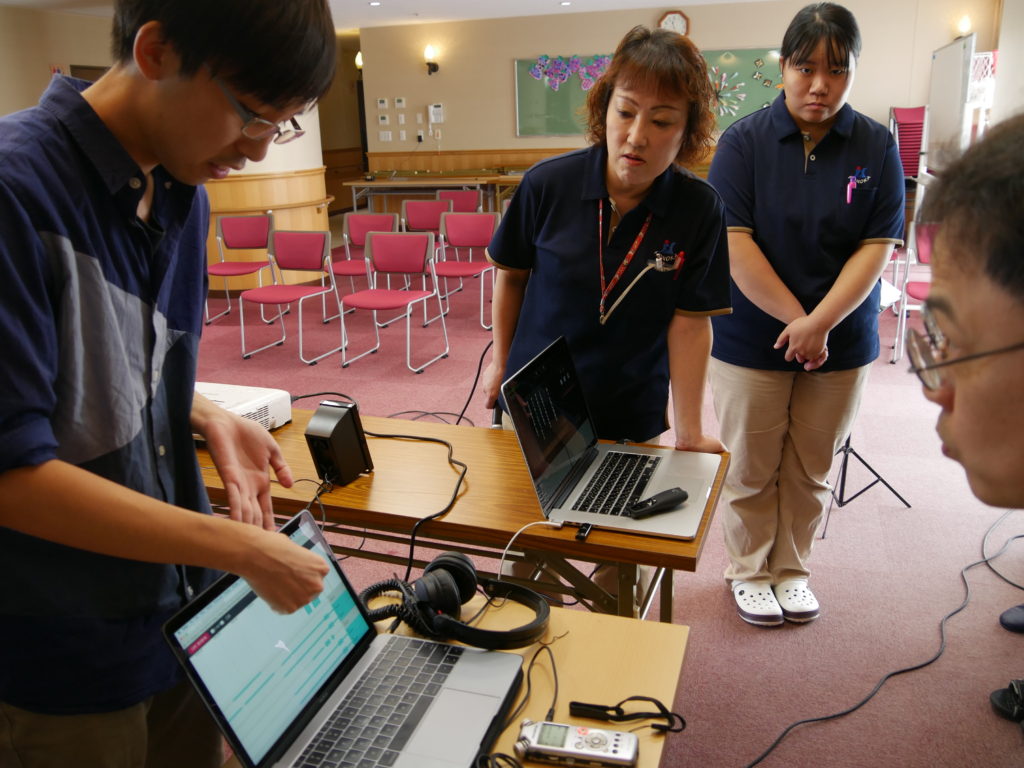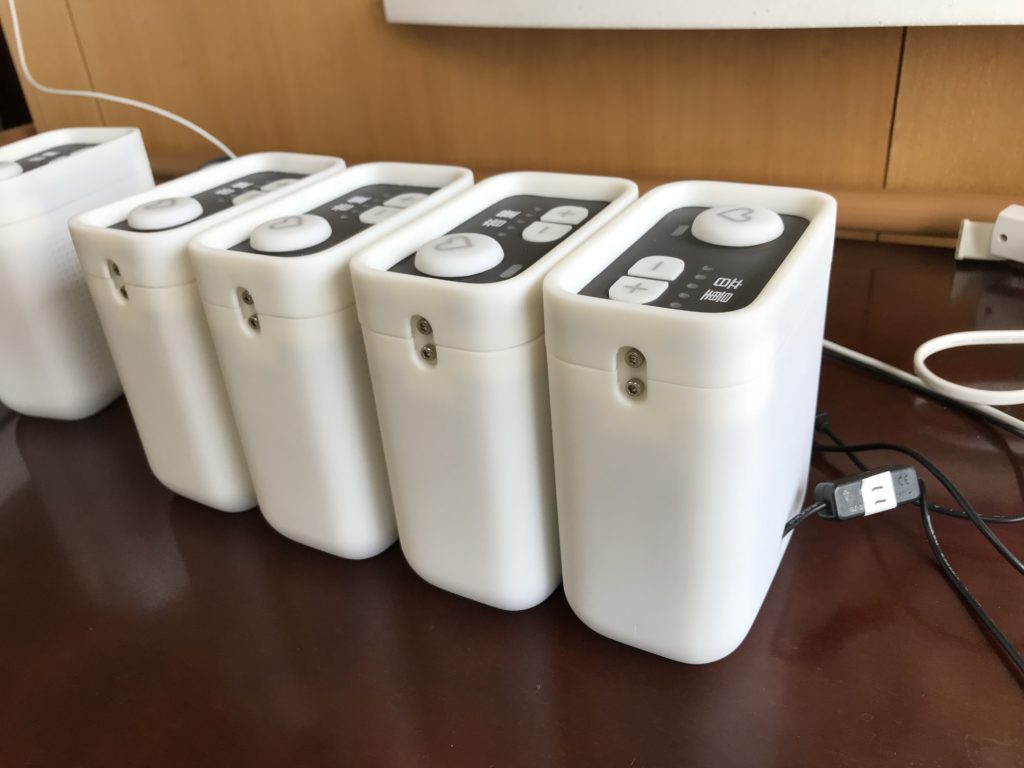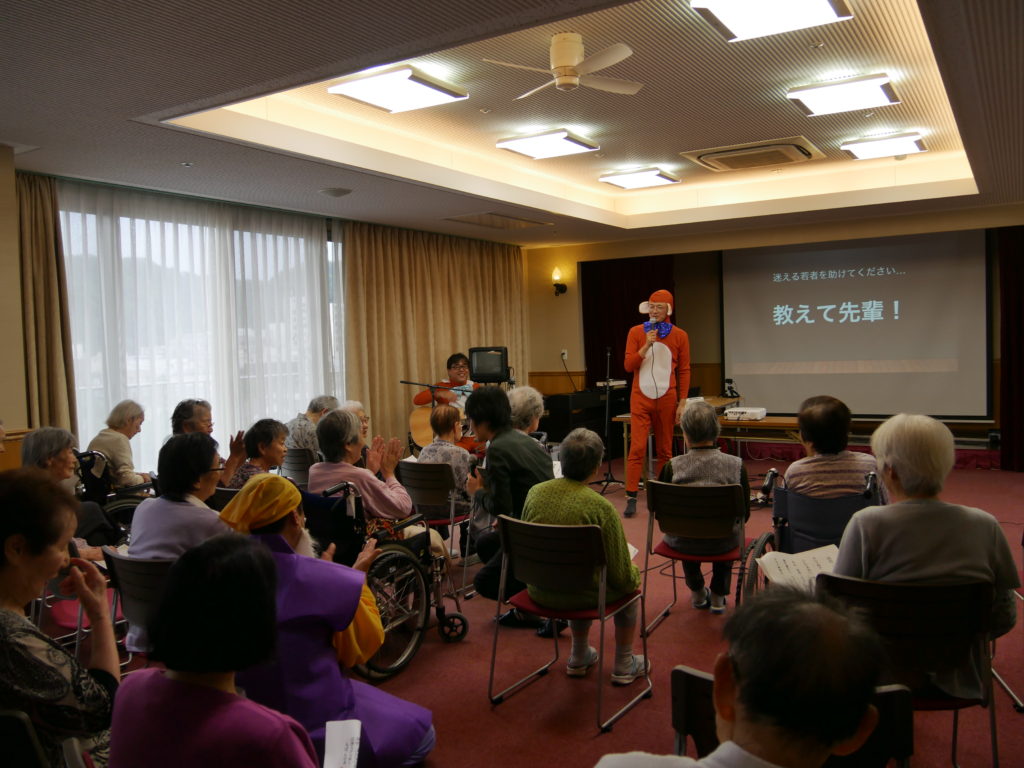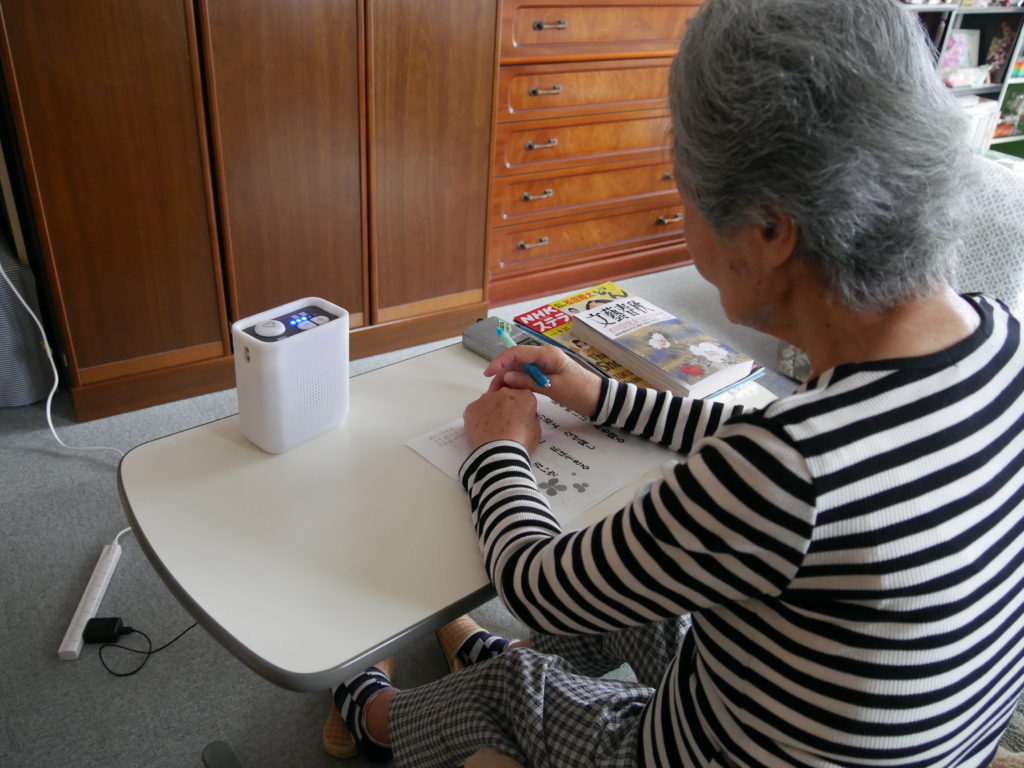In our society, care homes are increasingly becoming senior citizens’ final addresses. However, some residents of larger elderly homes hesitate to join events or communicate with other senior citizens. This pilot research explores the possibilities of a small-scale digital radio station in a care home, to encourage communication among residents and caregivers, from technical and practical perspectives.

To set up the radio webcast, a wi-fi system was installed from scratch, HTTP Live Streaming, OBS Studio, Nginx were used to broadcast and receive programmes from which residents could tune in.

Accompanying this was a newly made device using a raspberry pi chip anda 3D printed case. Designed for the elderly, it featuredonly two volume buttons, which also turned the device on and off, and a heart button, which allowed listeners to “like” what they were listening to.

The program was designed in order to promote communication between staff and residents, and among residents themselves. It was divided into three parts. First, individual awards were given from caregivers in recognition of each resident’s positive traits or behavior. Second, radio phone-ins were held where residents would give advice on problems from younger members of staff, reversing the dynamic between residents and caregivers. Lastly, staff held quizzes on their personal lives. Residents guessed the answers.

Overall, the webcast was a success. The radios were easy to use, allowing residents who do not usually attend care home events a way to participate with, and remain connected to events around them. Whilst radio sets were initially designed to be used individually, staff found that they became a good conversation starter in communal areas.

However, some problems were encountered. Due to the nature of the webcast, sending packets of data, there were often gaps in the webcast when patients were listening, with devices becoming desynced and receiving different parts of the webcast simultaneously. This made the like button redundant and confused the residents. In addition, there was a feeling that staff felt excluded from the project. It was decided that staff should be involved in the decision making process from the start in future.
